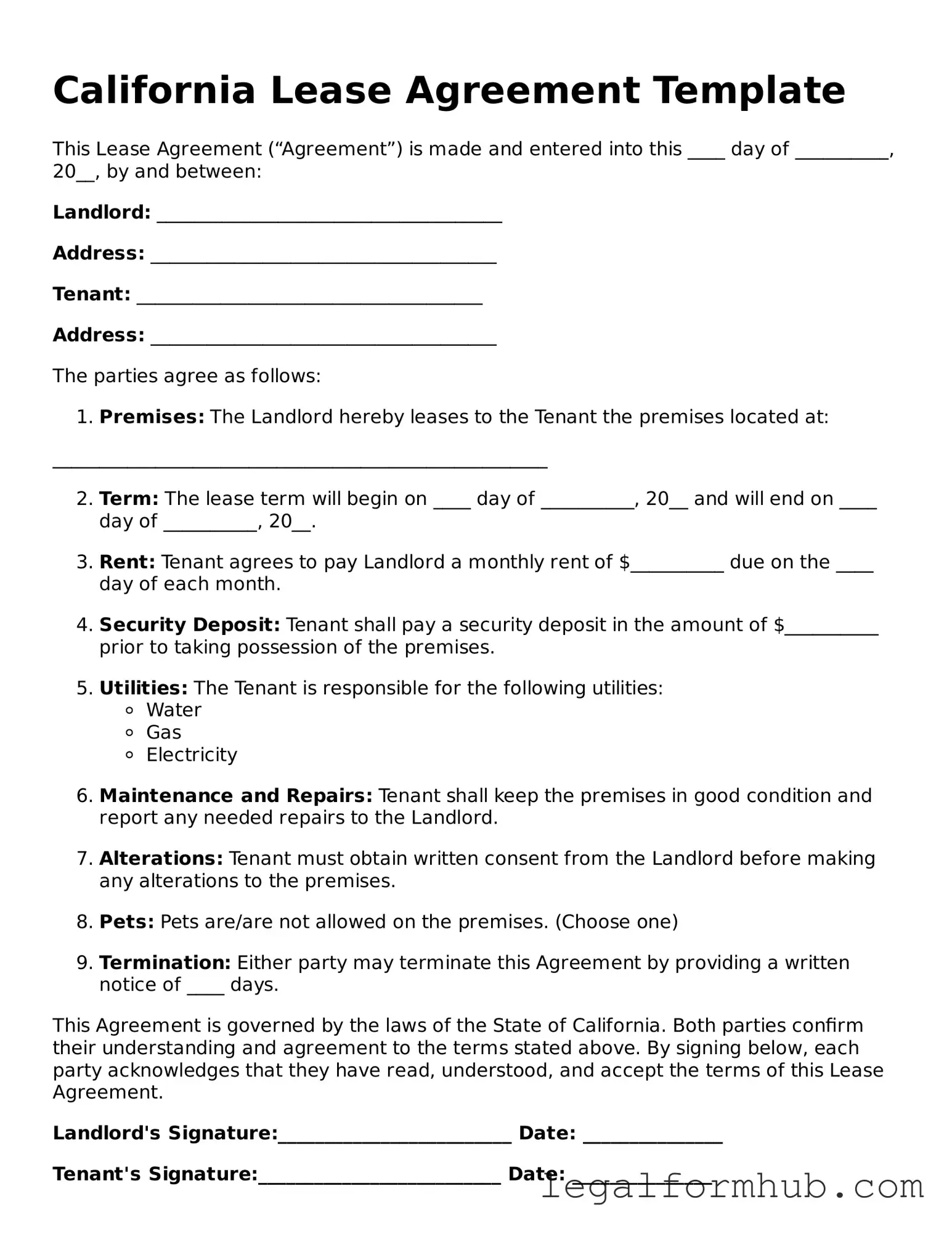The California Lease Agreement is akin to a Rental Agreement, which outlines the terms under which a landlord allows a tenant to occupy a property. Both documents specify the duration of the tenancy, the amount of rent due, and the responsibilities of both parties. However, while a Lease Agreement typically covers a longer term, often a year or more, a Rental Agreement is usually more flexible, often designed for month-to-month arrangements. This flexibility can be beneficial for both landlords and tenants who may not want to commit to a long-term lease.
Another similar document is the Sublease Agreement. This agreement comes into play when a tenant wishes to rent out their leased space to another individual, often with the landlord's consent. Like the California Lease Agreement, it details the rent amount, duration, and responsibilities of the parties involved. However, the Sublease Agreement also includes specific terms that address the relationship between the original tenant and the subtenant, ensuring that the original tenant remains liable to the landlord while allowing the subtenant to enjoy the property.
The Commercial Lease Agreement is another document that bears resemblance to the California Lease Agreement. While the latter is primarily used for residential properties, the Commercial Lease Agreement is tailored for business purposes. It includes terms related to the use of the property for commercial activities, often incorporating clauses about maintenance, zoning laws, and modifications to the property. Both agreements share similar structures regarding payment terms and duration but differ significantly in their intended use and legal implications.
For those looking to finalize a vehicle sale, a comprehensive Motor Vehicle Bill of Sale form is essential. This document serves as a formal record, ensuring that all details surrounding the vehicle transfer are properly documented and understood, protecting both the buyer and seller throughout the transaction. For more information, visit comprehensive Motor Vehicle Bill of Sale form.
Finally, the Roommate Agreement is similar in that it addresses the living arrangements between individuals sharing a rental property. This document clarifies each roommate's responsibilities regarding rent, utilities, and household chores. While it is less formal than a Lease Agreement, it serves a similar purpose in establishing clear expectations and reducing potential conflicts. Both documents aim to create a harmonious living environment, though the Roommate Agreement is typically more focused on interpersonal relationships than legal obligations.
